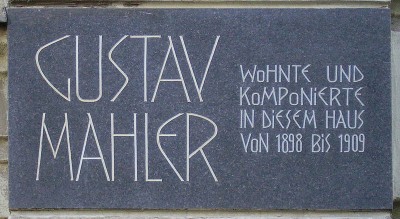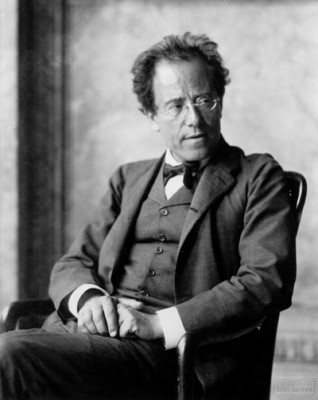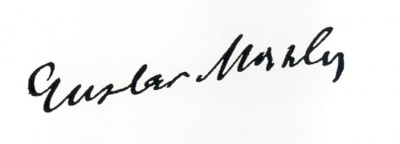| Reviews & Columns |
|
Reviews DVD TV on DVD Blu-ray 4K UHD International DVDs In Theaters Reviews by Studio Video Games Features Collector Series DVDs Easter Egg Database Interviews DVD Talk Radio Feature Articles Columns Anime Talk DVD Savant Horror DVDs The M.O.D. Squad Art House HD Talk Silent DVD
|
DVD Talk Forum |
|
|
| Resources |
|
DVD Price Search Customer Service #'s RCE Info Links |
|
Columns
|
|
|
Mahler: Symphony 2

I have to admit right off the bat that, while I count Mahler among my favorite composers, I am at best a classical-music dilettante whose first exposure to and interest in his music came from hearing alluring snatches of it in movies, from Husbands and Wives to In a Year with 13 Moons to Velvet Goldmine; the performance of his second symphony that is under review here is my first-ever exposure to this particular work. But it occurs to me that that scenario may actually be the one in which this Blu-ray edition--which captures a performance from earlier this year at a Mahler centennial celebration in Leipzig, Germany--could actually have the most extensive and positive impact, so I will happily admit my prior unfamiliarity and approach it from the point of view of someone who's not an expert, but who is grateful for the introduction to a powerful piece of music.

To begin with the main thing, the music itself: Mahler is well-known for his sturm und drang, his swooning, spilling-over romanticism--his high highs and low lows (a nationality is hardly all he shares with Goethe, romanticism's ringleader)--and those qualities are already apparent and well formed in this earlier work, which was first performed in 1895. Mahler's Second is often referred to as "the Resurrection," which suggests a religious theme (specifically Christian, clearly), but the symphony's five movements chart, with stirring emotion in both Mahler's conception and in the Gewandhaus Orchestra's execution, something that it's safe to say most if not all human beings have in common, differences in (or absence of ) religion notwithstanding: a rising and falling cycle of dread and uplift in the face of always-impending mortality and a defiant hope for something more. It was written for full orchestra plus multiple voices (the vocal element not being very common to most of Mahler's work, from what I understand) including two soprano vocalists and a huge choir, who sing alternately hushed and fiery selections of text adapted by the composer from German folk poetry and the work of poet Friedrich Gottlieb Klopstock. Though my untrained ear didn't find the melodies in this work quite so instantly enchanting or accessible as those in my favorite Mahlers (the Fifth, especially), they're very striking, with the different sections--woodwinds, bass, strings, an unexpected degree and variety of percussion--creating a multiplicity of textures and melodies that remind one of what classical music inherently has to offer that jazz and popular music don't: an unmatchable vastness to the canvas on which the composer is painting. There may also be some significance to the fact that Mahler's popularity has increased worldwide since rock took center stage in the mid-20th century; particularly as conveyed through the room-filling, high-definition sound made available by Blu-ray, his Second becomes an inescapable reminder that Nirvana was far from the first to master the brilliantly effective usage of the soft-loud dynamic.
But what makes this particular presentation especially suitable for the neophyte is the visual dimension. One might reasonably ask what the point is of bringing out a Blu-ray of a classical musical performance when such things (unlike pop music, with its seemingly inbuilt visual collaborations) have most often been audio-only and have more or less sufficed. The answer is this: Unless you were actually there or already an aficionado of orchestral/choral music, then being able to see the way it looks being performed live--the actual visible movement of all those violin bows, how the conductor physically relates to the performers, which instrument is making what sound--adds tremendously to gaining a better understanding and appreciation of what you're hearing. The crazy-intense, near-convulsive image of conductor Riccardo Chailly as he guides the musicians and singers (including impressive vocal soloists Christiane Oelze and Sarah Connolly) through the alternatingly tempestuous and serene music is a performance in its own right and provides unanticipated visual interest, as does director Henning Kasten's dynamic, intuitive shooting and editing choices, which bring us up close to those making the music.

It's a cruel paradox that classical music still seems to carry its aura of prohibitive, intimidating "elitism," stuffiness, and incomprehensibility at a time when access (logistical, if not attitudinal) to it is perhaps easier and more widespread than ever, with copious information and sound files readily available for exploration on the Web. But what's offered by this audiovisual release may be a step in the right, egalitarian direction, if not a full-on resolution; it's an opportunity for those of us (and I feel there are a great many) who do have an unfulfilled interest in classical music to approximate--at our leisure, in our homes, regardless of our intimidation or lack of prior classical frame of reference--the "full" live experience of going to the symphony.
THE BLU-RAY DISC:
The visual quality of the top-notch high-def digital video equipment that was clearly used in the filming of this performance transfers perfectly; the image is smooth, clean, and clear from beginning to end, without a glitch to be seen anywhere.
Sound:There's an embarrassment of riches, sound-wise, on this disc. Both the DTS-HD Master Audio and uncompressed PCM stereo options are exquisite, transmitting the flawless recording through your system with crystal clarity, so the only decision to make is whether you want to put yourself in the balcony (PCM) or in the orchestra seats (DTS), a choice that really comes down to being a function of your own setup. I found the PCM worked better for my smallish apartment living room, but if you have a larger square footage available, you may want to get the sound coming at you from every angle, in which case DTS may be the right option. At the level of sheer sound quality, though, you cannot go wrong with either one.
Extras:No extras to speak of on the disc other than an assortment of trailers for other classical concert releases from Accentus Music. The case, however, is an exceptionally handsomely designed trifold affair featuring a detail from a painting by Neo Rauch and containing, in addition to the Blu-ray disc, a booklet with a concise historical essay on the symphony, a biography of conductor Riccardo Cheilly, and a history of the 250-year-old Gewandhaus Orchestra.
FINAL THOUGHTS:A great introduction to both Mahler's Second and the (too) rarefied world of accomplished international classical repertory, this contemporary Gewandhaus Orchestra performance is especially perfect for anyone who has been looking to get more familiar with Mahler or to open up for themselves the rich history of classical music in general. Its thoughtful, welcoming visual presentation, along with the surprisingly modern-sounding dynamics, melody, and emotion in Mahler, make it an uncommonly apt point of entry, as enjoyable all around as it is enlightening and edifying. Highly Recommended.
|
| Popular Reviews |
| Sponsored Links |
|
|
| Sponsored Links |
|
|
| Release List | Reviews | Shop | Newsletter | Forum | DVD Giveaways | Blu-Ray | Advertise |
|
Copyright 2024 DVDTalk.com All Rights Reserved. Legal Info, Privacy Policy, Terms of Use,
Manage Preferences,
Your Privacy Choices | |||||||














